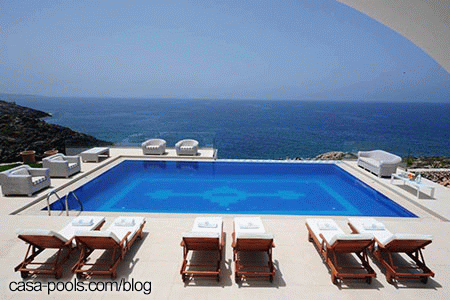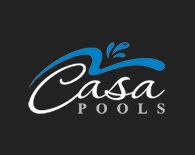|
|
|
Published On: March 3, 2014
By: Patricia Lewis, Kansas
|
GENERAL CATEGORY
|
INGROUND POOL SIZES
|

|
|
inground pool sizes
|
Before you even decide to install a swimming pool, you’re likely to start focusing on one key factor – size. After all, how can you even begin to envision how a new pool will look in your backyard without considering how much space it will take up? While there are certain standard inground pool sizes that many homewoners get, the truth is that a pool can be just about any size you choose.
For most rectangular pools are about twice as long on one side as they are on the other, with an average depth of around 5.5 feet. Typical swimming pool dimensions are 10 x 20, 15 x 30, and 20 x 40. The actual size and shape of your pool should be based on how you plan to use the pool and what resources you have to work with. Here are three questions to ask yourself.
1. What’s the point?
Think about how you plan to use your new swimming pool. If you’re just planning to lay around the pool and maybe take a dip once in awhile to cool off, then you obviously don’t need a large pool. On the other hand, if you’re planning to spend a lot of time in the water, it makes more sense to have extra space to move around.
If you swim for exercise, there are two routes to take. One is to get a more elongated shape, or even a lap pool. The other is to get a smaller pool or even a swim spa, with water jets installed that allow you to swim in place. Either way, you will want the pool to be deep enough that you don’t scrape your hands on the bottom.
Finally, do you plan to install a diving board? If so you will not only require a deeper pool, but also a wider one so that people can’t accidentally dive into a wall. In fact, the minimum size for a pool with diving board installed may be a matter of law in your area.
2. Who will be using the pool?
If only adults will be using the pool, you may want to go with a greater average depth to maximize the amount of swimming area. For kids, you will likely want a shallow wading area where they can splash around. Also consider accessibility and whether everyone will be able to climb in and out of the pool via a ladder – if not, plan on a shallow end with steps or even a beach entry.
Besides who will be using the pool, think about how many. If you have a large family, you will obviously want a larger pool where everyone can spread out and do their own thing.
3. What are the limitations?
There’s the pool of your dreams, and then there’s the pool of your reality. While you might like to put an Olympic sized pool in your backyard, that’s not realistic for most people. Here are some of the major limitations that might hold you back:
Cost. Size is one of the biggest factors in inground pool cost – if not the biggest. Your budget may dictate how large your pool can be.
Space. Your pool has to fit in your backyard, preferably with enough room left over for other activities you and your family enjoy. Remember, too, that you’ll need extra space around the pool for a paved deck.
Prefabs. If you’re using a pool kit, you will be limited to the sizes and shapes offered by manufacturers. In addition, there’s a maximum size for fiberglass pool shells because they have to be shipped intact over public highways.
One Last Point on Inground Pool Sizes
While the advantages of getting a larger pool are readily apparent, the case for smaller pools might not be so obvious. In addition to being cheaper, they’re also easier to maintain. And finally, whatever space you have in your backyard, a smaller pool leaves more room for other activities. That might not seem important at first when your new pool dominates your free time, but eventually you may appreciate the flexibility a smaller pool offers.
|
|
|
|
|
